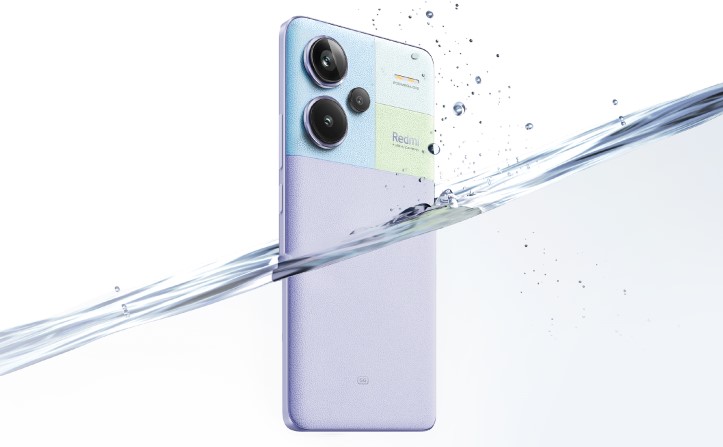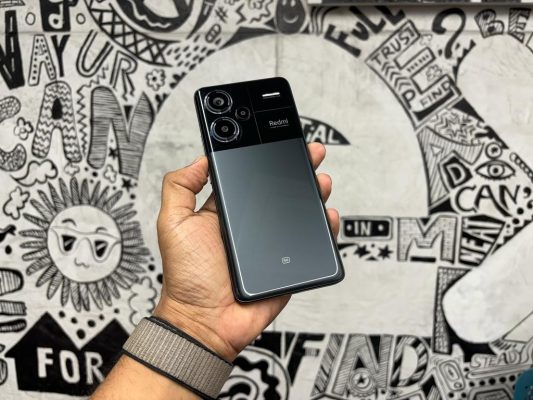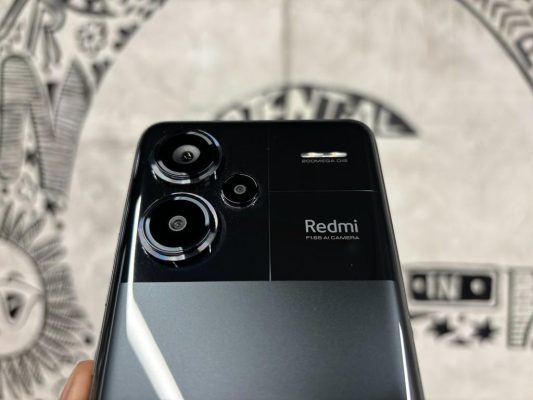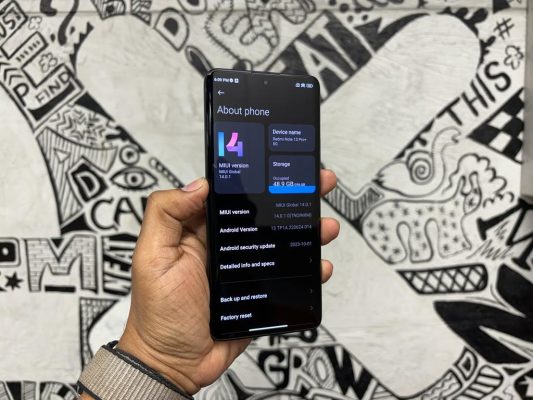
Xiaomi is magnanimous in the Indian market with its products of absolute value, starting with Xiaomi smartphones. The Redmi Note series has witnessed many takers, and Xiaomi boasts a sales figure of upwards of 30 million units. Targeting a pie of the market share, Motorola has been consistently offering good products. You get the gist: we are comparing Redmi Note 13 Pro + against the similarly priced Motorola Edge 40. Let’s find out about Xiaomi’s new Redmi Note 13 series.

Design
Motorola Edge 40 claims to be the slimmest phone in its category, with a leatherette back. It lives up to the claim with a sleek design, curved display and unique Pantone colours. Xiaomi has offered the Redmi Note 13 series in 3 different personas. While the classic Note 13 and the Note 13 Pro are flat-screen phones, the Pro+ has a curved display and different choices of materials. The leatherette back on the Redmi is not as natural to touch as Motorola’s faux but real leather feel. Overall, both these phones are handsome, and the curves bring out a sleek design with nice metal soft touch flat side housing. Both these phones are IP68 compliant and bring good built quality. This is great to see on budget mid-range smartphones.
Display
At peak brightness, there is barely any difference in the illumination, crispness, saturation and contrast, and impressive HDR depth. These phones bring 6.67FHD+ pOLED panels with Motorola, allowing a 3-step version of LTPO technology on their pOLED panel up to 120hz or the option for 144hz fast display. Redmi Note 13 Pro + keeps it simple with auto and the option to select either 60hz or 120hz. Colours can be adjusted on both of these phones for personal preference. Motorola Edge 40 sports a more vibrant display, while the Redmi Note 13 Pro + provides the best Gorilla Glass Victus protection on a budget. Viewing angles are impressive on both of these phones.
Cameras
Redmi Note 13 features the tried and tested 108 MP primary shooter, while the Note 13 Pro and Pro+ feature a 200 MP primary sensor with other sensors supporting ultrawide and zoom capabilities. The 200 MP camera on the Note 13 Pro+ functions differently than the Note 13 Pro. 4K video is offered in 24fps or 30fps unlike only 30fps on the Note 13 Pro. Motorola Edge 40 on the other hand features a 50 MP primary shooter and is capable of shooting 4k 60fps. The 200 MP camera of the Note 13 Pro+ also offers full fidelity like the ultra-res 50 MP shooter on the Edge 40 but the details are more prominent on the Edge 40. That said, there are differences in details, colours, saturation, etc. While the Edge 40 manages crisp details, it enhances the image to make it pop on the display while the Redmi Note 13 Pro+ captures almost true to life colours and is the better camera among the two in pure comparison.

Performance
Running on Android 13, both these phones feature different OS. Redmi Note 13 Pro+ runs all the ads, bells and whistles of MIUI 14 while awaiting an update for Hyper OS. Motorola Edge 40 runs a rather clean UI with close to stock Android features and Moto gestures we have come to love. The hardware is a mixed bag as both these phones feature 12GB + expandable RAM, 256gb fast memory running on Mediatek Dimensity processors. The Edge 40 packs a Dimensity 8020 SOC while the Note 13 Pro+ is powered by Dimensity 7200 Ultra. The latter is specialized for Redmi Note 13 Pro+ and thus gets additional performance boost in comparison to Edge 40. For eg. Games feature 90fps and hold higher frames as compared to the Edge 40. In day to day task, both are amazing performers and its a Mediatek issue where some apps crash. Hope both these manufacturers roll out patches to bring more stability. Call quality was excellent on both these phones with nice stereo speakers supporting Dolby Atmos. WiFi connections on the Edge 40 sports a winning edge over the Redmi Note 13 Pro+ on the same network.
Battery
Slimness comes at a cost since the Motorola Edge 40 features a 4400mAh battery while the Redmi Note 13 Pro+ boasts almost another 1K more mAh and thus performs much better. The Edge 40 does bring wireless charging to its slim profile with 65W wired charging. The Redmi Note 13 Pro+ packs a 120W charger and needless to say, juices up quick, performs longer and is a good compromise. NFC capabilities are available on both these phones too.

Verdict
Xiaomi’s Redmi Note 13 Pro+ is a great evolution to the Note series. The prices though are a concern. What was once an affordable series is now competing with some amazing products, sometimes priced more competitively. The Motorola Edge 40 is a classic example. Thanks to the new IP68 and other IP ratings on the other Note series, the Redmi Note series is finally ready to take on competition and regain its charm.

